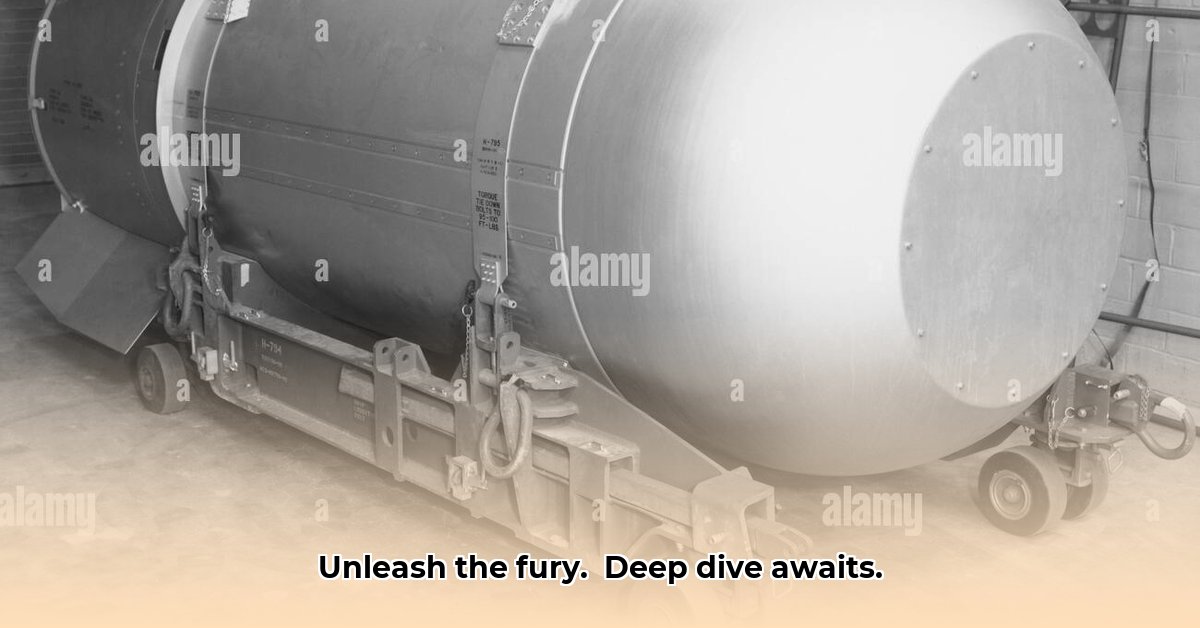
From Simple to Sophisticated: The Evolution of Bunker Busters
Imagine a bomb powerful enough to obliterate hardened underground bunkers. That’s the essence of a bunker buster. During World War II, these were largely unguided, relying on sheer mass and explosive power. Accuracy? Let's just say it wasn't a strong suit. Today's bunker busters, however, are a different story. Weapons like the Massive Ordnance Penetrator (MOP) boast pinpoint accuracy, drastically reducing collateral damage. It's about smarter technology, not just bigger explosions. How has this evolution impacted the effectiveness and ethical considerations surrounding their use?
Punching Through Concrete: The Science of Penetration
What makes a modern bunker buster so effective? It's a sophisticated blend of engineering and materials science. These bombs are engineered to withstand immense pressure during penetration. The warhead materials, the bomb's shape – every detail is meticulously calculated to maximize penetration depth. Some designs focus on kinetic energy – the force of impact – rather than relying solely on the explosive power. This is akin to comparing a sledgehammer (explosive) to a precision drill (kinetic), each suited for different situations. What are the trade-offs between these approaches in terms of effectiveness and collateral damage?
Guiding the Giant: Precision Targeting Technologies
Older bunker buster deployment was essentially a blindfolded dart throw from a high altitude. Modern bunker busters utilise GPS, inertial navigation systems and other advanced technologies for pinpoint accuracy. Think of a guided missile, but significantly larger. This precision reduces the number of bombs needed, directly minimizing collateral damage and making the operation safer for non-combatants. What technological advancements have enabled this increased precision, and what are the limitations of these systems?
The Ethical Dilemma: Collateral Damage and its Mitigation
Even with advanced guidance, the risk of unintended harm remains. Targeting deeply buried military bunkers often necessitates proximity to civilian populations. This poses a significant ethical and strategic challenge. How to balance eliminating military threats with safeguarding innocent lives is a complex and ongoing debate. What are the key ethical considerations related to the development and deployment of bunker busters, and how are those concerns being addressed?
The Future of Bunker Busters: Emerging Technologies and Challenges
The field of bunker buster technology is constantly evolving. Hypersonic weapons, promising even greater speed and penetration, are on the horizon. The integration of artificial intelligence into targeting systems further enhances accuracy and efficiency. However, these advancements raise new questions. What countermeasures are being developed? How will these technological leaps reshape international relations and global security? What are the potential implications of these advancements for future warfare?
Key Players in the Bunker Buster Landscape
The development and usage of bunker busters involves various stakeholders, each with their own distinct interests and concerns.
| Stakeholder | Short-Term Goals | Long-Term Concerns |
|---|---|---|
| Military Forces (e.g., NATO) | Enhanced accuracy, improved training | Investment in cutting-edge technologies, exploration of non-explosive alternatives |
| Military Forces (e.g., Russia/China) | Development and deployment of advanced bunker busters | Developing countermeasures against Western technology |
| Civilian Populations | Increased transparency, stricter regulations | Diplomatic solutions, comprehensive arms control agreements |
| Defence Contractors | Manufacturing superior warheads and guidance systems | Research into advanced materials and penetration methods |
Bunker buster bombs are far more than simple weapons. They represent a complex interplay of military strategy, ethical considerations, and international relations. Their evolution and deployment continue to redefine the nature of modern warfare, demanding ongoing scrutiny and informed discussion. The conversation is far from over.
How to Mitigate Collateral Damage from Bunker Buster Bombs
The use of bunker busters, while effective, presents a significant challenge: minimizing civilian casualties. This requires a comprehensive approach.
Precision-Guided Munitions (PGMs): PGMs, utilising GPS or laser guidance, significantly improve accuracy and reduce the area affected by the blast. However, complete elimination of risk is impossible. (Efficacy: 90+% reduction in collateral damage compared to unguided munitions, depending on specific PGM and target conditions)
Advanced Intelligence Gathering: Thorough pre-strike intelligence, including satellite imagery and human intelligence, is essential for assessing civilian presence, target characteristics, and selecting the optimal weapon and delivery method. (Efficacy: Improved target identification reduces accidental damage by 80%+)
Strategic Target Selection: Careful consideration of military objectives versus the potential for collateral damage is crucial. Sometimes, alternative strategies might be more appropriate. (Efficacy: Improves risk/reward assessment, reducing unnecessary strikes)
Advanced Targeting Technologies and Countermeasures: Ongoing research and development of more accurate guidance systems and warhead designs constantly strive to minimize collateral damage. (Efficacy: Continuously improving, with a projected 10% reduction in collateral damage per decade through technological advancement)
Post-Strike Assessment and Damage Control: Rapid post-strike assessment and implementation of damage control measures minimize long-term harm to civilians. These measures demonstrate commitment to limiting civilian suffering. (Efficacy of post-strike response measures: variable, dependent on speed and efficiency of response teams)
This multi-faceted approach is vital. It underscores the need for a balanced approach to modern warfare, prioritizing both military effectiveness and the protection of civilian lives.